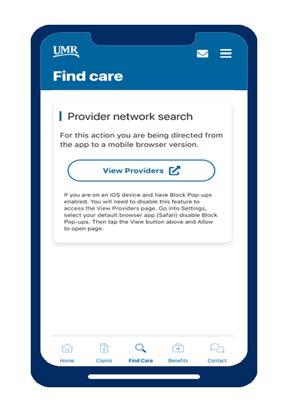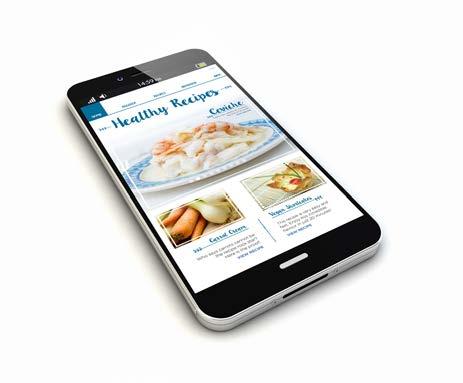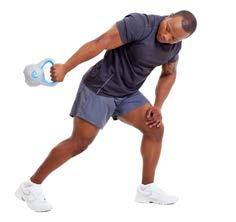Healthy You
Your guide to living well





Healthy You is an award-winning magazine featuring health and wellness articles and promoting practical tools that support and encourage healthier choices.
This educational resource for UMR members is published four times a year as part of our member online services and can be viewed, downloaded and shared digitally.
Healthy You is packed with helpful resources and practical recommendations to address the most common health topics, including:
• Building healthy habits
• Preventive care recommendations
• Chronic health conditions
• Exercise tips
• Nutrition and recipes
• Stress and mental health management
• First aid and getting care
• Health literacy
• Spanish-language resources

While using this electronic publication, you may click on a link to other websites. We provide links to other websites that may contain information that may be useful or interesting to you. We do not endorse, and are not responsible for, the content and accuracy of linked websites operated by third parties or for any of your dealings with such third parties. You are solely responsible for your dealings with such third parties, and we encourage you to read the terms of use and privacy policies on such third-party websites.
Available features and benefits are dependent on the products and features included in the plan design. Not all members will have access to all features shown.
Copyright © 2025 United HealthCare Services, Inc.
Reproduction in whole or part is not permitted without permission in writing from UMR. All information and links were accurate and functional at the time of publication. However, because this electronic publication contains links to third-party sites, information can change and become unavailable.

Track all your claims in one place


Check in at your convenience to see if a claim has been processed and what you might owe. You can search the claim activity for everyone on your plan, view your claims cost summary or submit a new claim.
Check out this FREE resource.
Sign in to your member account on umr.com.
Welcome to a smarter, simpler, faster way to manage your health care benefits, right from the palm of your hand.

The UMR app has a smart fresh look, simple navigation and faster access to your health care benefits information. View your plan details on demand — anytime, anywhere.
With a single tap, you can:
• Access your digital ID card
• See a personalized list of your things to do to stay on top of your health and keep your benefits up to date
• Look up in-network health care providers
• Find out if there’s a copay for your upcoming appointment
• View your recent medical and dental claims
• Chat, call or message UMR’s member support team

Download the UMR app today!
Simply scan the QR code or visit your app store to get started.

Summer’s here, and chances are you’ll want to be outside enjoying those bright, sunny days.
Just remember to wear sunglasses to help protect your eyes from the sun’s harmful ultraviolet (UV) rays.

Consider these 7 tips to find the right sunglasses for you:

100% UV protection is number 1
Exposure to the sun’s UV rays can increase your risk of eye issues, including cataracts and eye-related cancers. Wearing sunglasses can help protect your eyes from sun damage. When shopping for shades, look for 100% UV or UV400 protection to help block the sun’s harmful UV-A and UV-B rays.
Polarized lenses reduce the glare that bounces off reflective surfaces like water, snow and roads. They can be an ideal choice for summer and winter sports like fishing, sailing, golfing, cycling, skiing and snowboarding. Keep in mind that polarized lenses alone don’t protect against UV rays, so make sure the polarized sunglasses you select also feature 100% UV protection.

100% of the sunglasses you wear should feature 100% UV protection.
NOTE: Some polarized lenses may distort vision with certain types of tempered car windshields. This may cause odd patterns that could be uncomfortable for your eyes. Test new polarized sunglasses with your windshield to make sure they work for you.

Certain lens colors, like green, brown or amber, can help enhance contrast in the sun, which may be beneficial for people with sensitive eyes or those playing sports like golf or baseball. For driving, brown, gray, green or yellow lenses are recommended because they help minimize color distortion.
The bigger the better
The larger your lenses, the more your eyes, and the skin around your eyes, are protected from the sun’s damaging UV rays. Consider purchasing oversized or wraparound-style sunglasses that help deliver front and side protection from the sun.
The cost of sunglasses doesn’t reflect the quality of eye protection. In fact, plenty of cheap sunglasses, even those sold in gas stations or drug stores, have 100% UV protection and many also feature polarized lenses. On the other hand, many expensive sunglasses, including those made by fashion brands, may not offer UV protection or polarized lenses. No matter how much you want to spend on sunglasses, you can find the features you need to protect eye health.


If you or your children wear prescription glasses, look into photochromic lenses. This type of lens automatically transitions from clear to darkened in sunlight, while sporting 100% UV protection. That way, you only need one pair of prescription glasses for inside and outside. It’s a great way to save money, and it’s convenient because you’ll always have your sunglasses on hand since they’re the same as your regular glasses.
Play it cool — show everyone your style and protect your eyes at the same time.
DO encourage children 6 months and older and all the adults in your family to protect their eye health by wearing sunglasses outside.
DO wear sunglasses on both sunny and cloudy days to keep eyes protected from UV rays.
DO wear sunglasses year round for optimal eye protection.

DON’T look directly at the sun when wearing sunglasses.
DON’T look directly at a solar eclipse when wearing sunglasses — there are special glasses for that.
DON’T wear sunglasses in tanning beds (which also have many other health risks).
DON’T wear sunglasses for welding.
Are you fighting what appears to be eczema, but nothing is making it go away? You may be surprised to know eczema isn’t the only cause of inflamed, dry, scaly skin.
You may be suffering from psoriasis (se-‘ri-e-ses).
Psoriasis is a chronic skin condition that causes a buildup of rough, dry, dead skin cells and sharply defined red patches covered by a silvery, flaky surface. This type of skin irritation usually occurs on the scalp, elbows, knees, groin and lower back.
While not contagious, it does come and go and varies in size and intensity.
It’s thought to be an autoimmune disease where the immune system’s response abnormally triggers inflammation. Immature skin cells then multiply so rapidly the skin cannot shed them quickly enough, causing buildup that leads to thick, dry patches called plaques.
You may experience 1 type of psoriasis alone or at the same time as other types:
Most cases are plaque psoriasis where small patches of skin, appearing in the same areas on opposite sides of the body, develop thick, dry plaques that grow larger.
Teardrop-shaped patches suddenly appear and often disappear after several months without treatment.
Patches appear as smooth, inflamed areas without a scaly surface and may be misdiagnosed as or may appear in conjunction with a fungal infection.
This difficult to treat type appears as red, scaly areas.
Often misdiagnosed as nail fungus, this type appears as tiny white pits or yellowish spots with long ridges on the nails.
With this rare, severe form of psoriasis, skin becomes scaly and red over nearly all the body.
Patches become pus-filled and blister-like with the blisters turning brown and forming a scaly crust or peeling off, and the pustules are sterile with no bacteria.
Psoriasis is the most prevalent autoimmune condition, affecting about 2% of all Americans and impacting women and men almost equally.
It’s hard to tell the difference between various skin conditions, even among physicians. A specialist, like a dermatologist, can more readily provide a diagnosis:
Psoriasis is both an inflammatory and autoimmune disease that causes well-defined, thick, red, scaly patches with mild itching.
Eczema (atopic dermatitis) is a chronic, inflammatory skin disorder. It can appear as blisters that become scaly rashes or as thick dry patches of skin with scales — all with intense itching.
Psoriatic arthritis is a progressive inflammatory and autoimmune condition. This type of arthritis affects joints, tendons and ligaments and occurs with psoriasis.
X-linked ichthyosis is a rare genetic skin disorder that affects mostly males. It disrupts the normal shedding of dead skin cells, making them build up and clump into scales.
Here are some common summer irritants and what you can do to alleviate them:
(e.g., air conditioning or climate)
Hot, damp environments can help psoriasis because cold, dry weather can lead to dry skin. In the summer, keep warm, but not sweaty, and apply moisturizers after showering or spending time in a dry environment.
(e.g., burns, cuts, insect bites or outbreaks of poison ivy)
These can trigger flare-ups near or on the injury — typically 10–14 days after. Treat injuries quickly and calm itching. To reduce bug bites, use insect repellent or stay indoors when they are most active at dawn and dusk. To reduce cuts, apply moisturizer then shaving gel before you shave.
Too little or too much sun (e.g., sunburn)
Surprisingly, UVB rays help reduce the rate of skin turnover and can have anti-inflammatory effects. But wear broad-spectrum, SPF 30+ and fragrance-free sunscreen to prevent sunburns, which may make psoriasis worse.
Chemicals and minerals
(e.g., chlorine or salt)
Swimming in salt water can remove dead skin. However, salt water and chlorinated water from pools can also dry out skin. So it’s important to take daily lukewarm baths or showers with mild soap and heavily moisturize to keep your skin clean and damp.
To combat heat and sweat, try to stay cool with a fan, air conditioning or a wet towel. Wear breathable, light-colored clothing, like cotton, which absorbs less heat. Keep moisturized to prevent dry skin.
Finding a network provider on umr.com or the UMR app has never been easier



Go to umr.com and select Find a provider
Look for the name of your provider network on your ID card
Don’t have your ID card handy?
That’s OK. If you sign in to umr.com or the UMR app, you will be directed to your in-network provider listing.
Begin a search for your provider network using our alphabet navigation, or type the name into the Search box


Artificial intelligence (AI) is something you’ve probably heard of by now. In the past couple years, people have used AI to do everything from creating cartoon versions of their pets to helping write work emails. But did you know you can also use this new innovation to assist with your health?

Set an hourly reminder to drink water.
AI refers to a machine’s ability to perform certain tasks that mimic human intelligence. This includes things like:
You may already be using AI and not know it. While this technology might sound intimidating, using it is relatively simple. If you’ve used a chat box before (think MSN, Teams, etc.) then you can use most AI tools.
Recently, AI has been linked to programs like ChatGPT, a chatbot that can have “conversations” with users. AI tools that generate images, videos and other media content based on prompts have become increasingly popular as well.
Companies are now using AI that responds to questions and requests in everyday technology. Examples include:
Microsoft’s CoPilot
Google’s Gemini
Apple’s Siri
This makes AI easier to access and use. If you have a smart device and an internet connection, a quick search will show you several free, browser-based options.
Using AI to live healthier
Think of AI as your personal assistant.
Instead of spending hours researching certain types of workouts and hand-crafting a new routine, why not ask your virtual helper to do it for you? If you don’t love the information you get, you can always use the parts you like and scrap the rest.
You can also follow up with a clarifying request, like “revise this list to focus on vegetarian recipes,” or “come up with ideas that are more beginner friendly.”
Prompts can be broad and focus on better habits like eating clean or exercising, or you can get more personal and ask for help based on a specific need or dietary restriction.
Can’t think of what to ask?
Follow the prompts.
IMPORTANT: Don’t take medical advice from any AI program or tool. While this technology can provide information, give suggestions and answer questions about a wide range of topics, including health and medicine, it should never be used to diagnose or treat a condition, or provide medical advice.
Find a healthy recipe with these ingredients (add whatever you have in your pantry or fridge).
Create a list of healthier alternatives to soda.
Put together a grocery list and meal plan based on the Mediterranean diet.
Provide a list of high-protein breakfast ideas under 300 calories.
Compile 5 recipes for easy, healthy, on-the-go lunches.

Set 3 goals for this month to help improve my heart health.
Put together a weekly workout schedule for beginners.
Find a few videos with stretches that help with lower back pain.
Generate a strength-building exercise plan that doesn’t require gym equipment.
Create a route for a 45-minute outdoor walk near me (your city/ location).



Come up with 10 free self-care activities to unwind and relax in a healthy way.
Provide 5 practical tips for beginners to add to their daily routine for mindfulness.
Find some guided meditation videos that are 20 minutes or shorter.
Develop daily journaling prompts for a month.
Share some general recommendations to improve sleep quality.
You can tailor prompts to focus on your preferences and needs.
Want to focus on building mobility and flexibility? Looking to cut back on sugar? Feel free to modify the prompts above with any of these details. Or, come up with your own!
Talk to your doctor before making changes to your medication, diet or exercise routine.
Drowning is preventable. But it can happen in seconds and is often silent. And it can happen to anyone, any time there is access to water.
According to the Centers for Disease Control and Prevention (CDC):
Each year in the U.S., there are 4,000 fatal unintentional drownings — that’s an average of 11 drowning deaths per day.
Children ages 1–4 die from drowning more than any other cause of death.
And for children ages 5–14, drowning is the second leading cause of death behind motor vehicle crashes.
Anyone who is unprepared or unsupervised can die from accidental drowning. In fact, the location of a drowning often depends on the victim’s age.
Three quarters of drowning deaths in infants under 1 year occur in bathtubs.
For children ages 1–4, most drownings occur in home swimming pools.
For children ages 5–14, more than 40% of drownings occur in natural water (such as lakes, rivers and oceans), and more than 35% occur in swimming pools. And for those over 15 years, almost half of drownings occur in natural waters.
Drowning is preventable.
Don’t ignore the risks.
Physical factors that can lead to higher risk:
People with seizure disorders
People with heart conditions
People with autism spectrum disorder
Not knowing how to swim
Enrolling in swimming lessons can greatly reduce the risk of accidental drowning among children and young adults.
Lack of close supervision
Children should never be left unsupervised around bodies of water — no matter how large or small the amount of water. Children can die not only in pools, natural waters and bathtubs, but even in buckets of water.
Not wearing life jackets
Especially when boating and swimming, life jackets save lives. In 2021, the U.S. Coast Guard reported 658 boating-related deaths. Of those, 81% died from drowning, and 83% of those victims were not wearing life jackets.
Drinking alcohol
Alcohol impairs judgment, coordination and balance, and increases behavior that leads to risk taking. Up to 70% of deaths associated with water recreation are a result of alcohol use.
Not always top of mind, side effects of many medications can impact the body and mind like alcohol does. Taking medications for conditions such as schizophrenia, depression, bipolar disorder and anxiety can greatly affect water safety.
Drowning
is preventable. Follow pool safety rules.
Something that may surprise you is that men are at a higher risk of drowning than women.
Statistics point to men becoming victims more often because of:
• Increased exposure to water
• Alcohol use
• Risk-taking behaviors
















One of the most important factors for pool owners when it comes to safety is proper fencing. Almost every municipality in the country requires pools to be fenced. But one of the most overlooked safety precautions when it comes to fences is not isolating the pool completely. The safest fences completely isolate the pool on all four sides with a gate that is childproof.
For above-ground pools, secure, lock or remove steps or ladders that can provide easy access. That includes outdoor furniture that could be used to gain access.
Install a secondary barrier such as alarms or locks that are out of reach of children. It’s a good idea to make sure the doors and windows in the home are locked to keep children from sneaking out unattended.
• Never dive or enter water headfirst unless in a safe diving area.
• Steer clear of drains and openings that create suctions.
• Always swim sober.
• Swim with a buddy and designated “water watcher.”
• If you’re the “water watcher,” avoid distractions such as reading or using a cell phone.
Drowning is preventable. Know the subtle signs of drowning and the 5 steps to intervene.
5 steps to take:
According to the American Red Cross, a person who is drowning has the greatest chance of survival if these steps are followed:
1 Identify a drowning victim
Recognize the signs of someone in trouble and shout for help.
2 Rescue
Rescue and remove the person from the water (without putting yourself in danger).
3 Call 911
Ask someone to call emergency medical services (EMS). If you’re alone, give 2 minutes of care, then call EMS.
4 Start CPR
Begin rescue breathing and CPR.
5 Continue CPR with AED
Use an automated external defibrillator (AED), if available, and transfer care to advanced life support. Check for signs of drowning*
• Head low in the water • Glassy or empty eyes
• Gasping or hyperventilation
• Vertical positioning: not using legs to kick
• Quiet struggling
• Unresponsiveness
Using common sense and following precautions can be a life saver around water. Always be prepared to be vigilant and protect yourself and others enjoying the water with you.
* According to Stop Drowning Now
It’s important to warm up before you work out — even when it’s hot outside — and cool down afterward.
Warming up before you exercise gets your blood flowing, raises the temperature of your muscles and may help you avoid injury. According to the American Heart Association (AHA), a good warmup widens your blood vessels so your muscles are well supplied with oxygen, and slowly raises your heart rate to minimize stress on your heart. It also makes your muscles more flexible and helps them work more efficiently.
The easiest way to warm up is to exercise slowly for the first few minutes, then pick up the pace. For example, before running, walk briskly for 5–10 minutes.
If you want to stretch during your exercise session, it’s best to do it after you warm up or cool down while your muscles are warm. It’s unclear whether warming up, cooling down or stretching prevents injuries, but there is definitive evidence that it’s good for your cardiovascular system, your flexibility and your range of motion.
You should also cool down after exercise to bring your heart rate and body temperature back to normal. The AHA says a proper cooldown keeps blood flowing throughout your body, and that stopping exercise suddenly can cause light-headedness because your heart rate and blood pressure drop rapidly.
Check with your provider before significantly increasing your activity level. This is especially important for those with an underlying medical condition. Ask about the amounts and types of activities that may be best for you.
Cool down by ending your routine at a slower pace for the last 5-10 minutes of your workout.

Try this multicolored approach to eating more fruits and veggies.

Tracking what you eat in an app or a food diary isn’t for everyone. The good news is there’s an easy way to make sure you’re getting most of the nutrients you need — just follow the rainbow. Eat a mix of colorful fruits and vegetables for a wide variety of vitamins, minerals, fiber, iron and even protein.
The pigments that give plant foods their vibrant colors are valuable to the plants and the humans and animals who eat them. Each color in fruits and vegetables is created by specific phytonutrients — natural compounds that help protect plants from sun, germs and insects — and each color produces specific nutrients.

Here’s how your body could benefit from each color group:

Contains: lycopene
Benefits: improves heart health, decreases prostate and breast cancer risk, contributes to stroke prevention, increases brain function
Try eating: tomatoes, beets, radishes, cherries, strawberries, red onions, red peppers

Contains: carotenoids
Benefits: reduces the risk of heart disease and inflammation, strengthens the immune system, builds healthy skin, improves vision
Try eating: carrots, winter squash, apricots, yellow peppers, sweet potatoes, bananas, pineapples, mangoes, pumpkins, peaches, oranges

Contains: indoles and isothiocyanates
Benefits: prevents neural tube defects in babies and may help prevent cancer
Try eating: spinach, arugula, broccoli, Brussels sprouts, avocados, kiwis, green tea, asparagus, fresh green herbs, kale, artichokes

Contains: flavonoids and allicin
Benefits: anti-tumor properties, reduces cholesterol and blood pressure, improves bone strength, decreases risk of stomach cancer

Try eating: onions, mushrooms, cauliflower, garlic, leeks
Contains: anthocyanins and antioxidants
Benefits: improves brain health and memory, lowers blood pressure, reduces the risk of stroke and heart disease
Try eating: blueberries, blackberries, eggplant, figs, purple cabbage, concord grapes, plums

Get out of your grocery shopping rut and try new things if you want to expand your fruit and veggie color palette. It’s OK to continue to eat your favorites, but check out what’s available across the color spectrum each time you go shopping. Then try to mix it up or find something new. The farmer’s market is a great place to browse in-season fruits, veggies and herbs, especially during summer.
• Look for recipes that include a variety of produce. Soups, salads, stir-fries and smoothies are often loaded with fruits or veggies.
• Choose a different colored fruit or veggie to pair with each meal or snack.
• Garnish your main dishes with fresh herbs.
• Upgrade your salads by adding different colored greens or cabbage.
• Don’t pass over frozen produce. It’s preserved at peak freshness to lock in nutrients, and it can be cheaper and more convenient than fresh fruits and vegetables.
• Eat the skin of fruits and veggies after washing them well — that’s where most of the nutrients reside.
• If you’re reluctant to try new things or break out of your meal routine, pick just one new fruit or veggie to try each week. Then start to incorporate the ones you like each time you meal plan or shop.
To make fruits and vegetables more appealing — especially to children — create an actual rainbow on the plate.
• For fans of fruit, arrange layers of sliced berries, kiwis, bananas, apples, melon, oranges and grapes into a rainbow shape and pair with this cinnamon yogurt dip
• For veggie lovers, serve raw broccoli and cauliflower florets, carrot sticks, grape tomatoes, celery, mushrooms and different colored bell peppers with this creamy vegetable dip.
To remember the colors in the rainbow, just think of “Roy G. Biv.” That’s the acronym for red, orange, yellow, green, blue, indigo, violet.

Use this handy calculator to find out how many servings of fruits and vegetables you need each day based on your gender, age, height and weight.

Lack
Gender
Insurance
Stigma
Location
Socioeconomic
Ethnicity/Race
LGBTQ+
Mental health plays a big role in overall well-being, but many people in minority communities face extra challenges when seeking care.
Factors like stigma, discrimination and limited access to quality services create serious barriers to treatment. Understanding these challenges and misconceptions is the first step in breaking the stigma and ensuring everyone gets the support they deserve.
Many minority communities face significant challenges in accessing quality mental health care. Limited insurance coverage, lack of diverse providers, historical and systemic racism, and language barriers make it harder to find and afford the right support.
These barriers limit or delay access to care*: of Latinos with mental health diagnoses actually receive treatment. of Black Americans with mental health diagnoses
* According to health policy organization KFF and the National Library of Medicine of Black Americans with major depression did not receive mental health care. of Black Americans with serious mental illness did not receive mental health care. of LGBTQ+ people reported having to wait at least a month for mental health services.
Cultural stigma, discrimination and limited representation can create additional barriers.
Cultural stigma
In some communities, mental illness is viewed as a personal weakness rather than a medical condition. Many cultures stress privacy, which can discourage people from sharing their struggles outside of their family or community. Additionally, religion can be seen as the only solution. This stigma is strong in communities of color.
Discrimination
Studies show that people of color receive less mental health care and poorer quality treatment compared to white patients.
Black, indigenous and people of color (BIPOC), and LGBTQ+ patients often experience implicit bias from health care providers, contributing to poor quality and harmful impacts on their physical and mental health.
Minority patients are less likely to get guideline-consistent treatments for depression and anxiety.


was the third leading cause of death among*:

Men ages 25–34 years old
Limited representation
People of color make up only 16% of the psychology workforce.
A lack of cultural competence among providers leads to misdiagnoses, misunderstandings and ineffective treatment approaches. Additionally, because people of color are often excluded from mental health research, there are gaps in knowledge about which treatments work best for different populations.
Because of these challenges, self-advocacy is essential when seeking mental health support.



Many minorities and people of color use emergency rooms for mental health concerns. Here are 4 ways you can advocate for proper care in these settings:
Request mental health screenings: Ask for mental health assessments during your ER visit.
Ask for referrals: If you visit the ER, request referrals to specialized mental health services.
Insist on follow-up care: Ensure you have proper follow-up care and outpatient treatment plans after an emergency visit.
File a complaint: If your health concerns are ignored, file a complaint with the health care facility’s patient advocate, the state medical board or the state health department.
Advocating for yourself is vital, especially for minorities and people of color who often face problems in accessing proper treatment.
Here are some ways you can better push for your mental health needs:
Seek culturally competent care from a provider who understands your background and experiences for more personalized treatment.
Speak up about your symptoms, concerns and treatment preferences. Document everything.
Ask the provider to document any refusal of care in your medical records.
Bring a trusted friend or family member who can provide extra support and advocacy.
Know your rights by familiarizing yourself with patient rights and anti-discrimination laws in health care settings.
Mental health support isn’t limited to therapy — there are many other ways for minorities and people of color to find help and connection. Support groups designed for specific communities provide safe spaces to share experiences and find encouragement.
LYRIC, Black Thrive and the Caribbean & African Health Network offer mental health resources tailored to minority and LGBTQ+ communities.
Online communities
Black Emotional and Mental Health Collective (BEAM), Therapy for Latinx, National Queer and Trans Therapists of Color Network (NQTTCN) and Asian Mental Health Collective are some peer support networks that can be helpful, allowing people to connect with others who understand their struggles.
Additional resources
Mental Health America’s BIPOC Mental Health Resource Center offers helpful information. Also, creative outlets such as art therapy and storytelling platforms can be powerful ways to process emotions.


Allies play an important role in creating a more supportive and understanding environment by challenging misconceptions, advocating for better resources and fostering open conversations. Here’s how you can help reduce stigma and support others with mental health challenges:
• Learn about mental health conditions, including signs and symptoms, to better support those affected.
• Educate yourself on the specific barriers minorities face in accessing mental health care.
• Be mindful of microaggressions and your implicit biases, and avoid language that reinforces harmful stereotypes.
“Centering” yourself means intentionally bringing your focus back to your present state of mind and body. This helps you to be more grounded and aware of your emotions in the moment rather than being swept away by external distractions or overwhelming thoughts.
Managing stress from systemic issues, discrimination and daily life is essential for mental well-being.
Ways to regulate your nervous system:
• Meditation/mindfulness: Try apps like Calm, Liberate or Insight Timer to relax and clear your mind.
• Breathing techniques: Try box breathing, deep belly breathing or grounding exercises.
• Exercise: Try walking, yoga or stretching exercises.
• Journaling: Write down your thoughts to help process your emotions.


Breaking the stigma and improving mental health care for minorities starts with awareness, advocacy and support — because everyone deserves access to the care they need.
Sign in to umr.com to see a personalized to-do list that highlights the steps YOU need to take to stay on top of your health and keep your benefits up to date. Personalization is based on your company’s health benefits plan and the programs you are eligible for.

• Review and complete health actions
• Provide/verify your email address
• Provide other insurance information
• Update security questions
• Review new claims
• Be promptly alerted to any denied claims
• Provide accident details
• Go paperless
• Get to know UMR
• Take your clinical health risk assessment (CHRA)

Summertime brings warm weather, outdoor activities, and spending time with family and friends. However, for people managing diabetes, it can present unique challenges. Extreme temperatures can affect blood sugar levels, medication effectiveness and overall health.
Here are some useful tips for managing blood sugar levels during the summer months:
Engaging in outdoor activities is a great way to stay active, but it’s important to plan them carefully to avoid becoming a victim of a heat-related issue:
Exercise early a.m. or late p.m.:
Plan outdoor activities around the cooler parts of the day, such as early morning or late evening. Avoid high peak sunlight hours, typically between 10 a.m. and 4 p.m.
Take breaks when needed: Rest in the shade or indoors to cool down and prevent overheating. Listen to your body!

Staying hydrated is one of the most important steps in managing blood sugar levels during the summer. Dehydration can lead to elevated blood sugar levels as the body becomes less efficient at using insulin.
Here are some tips to stay hydrated:
Drink plenty of water:
Aim for at least 8–10 glasses of water a day. Avoid drinks with high levels of sugar and caffeine, which can dehydrate you.
Carry a water bottle:
Always have water with you. Bonus points if you have a BPA-free, insulated water bottle.
Monitor urine color:
Light-colored urine indicates good hydration within your body, while dark urine suggests you need more fluids to hydrate.
“I carry my meds, water bottles and snacks in my backpack. I’m always prepared.”
Heat can cause blood sugar levels to fluctuate, making it more difficult for people with diabetes to manage their condition. Follow these tips to stay on top of your blood sugar levels:
Check more often:
Test your blood sugar levels more frequently than usual, especially before and after outdoor activities in extreme heat.

Carry glucose tablets or sugary snacks to help raise low blood sugar levels.
High temperatures during the summer months can make certain diabetic medications less effective, particularly insulin. Here are couple ways to protect your medication:

Use a cooler:
Store insulin in a cooler when traveling or spending time outdoors — make sure it doesn’t freeze.
Avoid direct sunlight: Keep medications out of direct sunlight and avoid leaving them in a hot car.
It’s important to drink water even when you are swimming and may not feel the effects of the sun.

5. Be mindful of heat-related symptoms
Heat can intensify diabetes symptoms and can lead to heat exhaustion or heat stroke. Be aware of the following symptoms:
Heat exhaustion:
Symptoms include heavy sweating, weakness, dizziness, nausea and headache. Move to a cooler place, drink water and rest.
Heat stroke:
Symptoms include high body temperature, confusion, rapid pulse and loss of consciousness. Seek immediate medical attention.
Certain colors, materials and fits can affect your body temperature during the summer. Selecting the right clothing can help you stay cool and comfortable in the heat:


Lightweight fabrics:
Wear loose-fitting, lightweight and breathable fabrics like cotton.
Light colors:
Light-colored clothing reflects sunlight, helping to keep your body temperature cooler.
Wear a wide-brimmed hat and sunglasses. Apply sunscreen multiple times a day to protect your skin from harmful UV rays.
Managing blood sugar levels during the summer months requires planning and attention to detail. By staying hydrated, monitoring your blood sugar closely, protecting your medication, planning outdoor activities carefully, wearing appropriate clothing and being aware of heat-related symptoms, you can enjoy a safe and healthy summer.
Always remember to consult with your health care provider before making any changes to your diabetes management plan.
Know where to go when someone is sick or in a crisis situation.




Where you go for medical services can make a big difference in how much you pay and how long you wait to see a health care provider. Explore the following information to help you decide the appropriate setting for your care.
Determine the severity of the symptoms and choose the provider that works for you.
If you are severely ill and/or it’s an emergency, call 911.
Go to the Centers for Disease Control and Prevention (CDC) for the latest information on COVID-19, including vaccines, cases and data, how to protect yourself and what to do if you are sick.
The emergency room (ER) is for serious injuries and potentially life-threatening situations. Visit the ER if you are badly hurt or experience sudden health changes.
If you are not seriously ill or hurt, you could wait hours, and your health plan may not cover non-emergency ER visits.
TIMES TO GO:
• Sudden weakness, trouble talking or blurred vision
• Large open wounds
• Difficulty breathing
• Severe head injury
• Heavy bleeding
• Spinal injuries
• Chest pain
• Major burns
• Major broken bones
Seeing your doctor is important. Your doctor knows your medical history and any ongoing health conditions.
TIMES TO GO:
• Preventive services and vaccinations
• Medical problems or symptoms that are not an immediate, serious threat to your health or life
• Recommended, follow-up care for ongoing health conditions
Telehealth services allow you to meet with health care providers remotely by phone, mobile app or online video conferencing. Services are often available 24 hours a day, seven days a week.
TIMES TO VISIT:
• Allergies, colds, flu, coughs or sore throats
• Nausea, vomiting, constipation or diarrhea
• Ear problems, fever or headaches
• Insect bites, rashes or pink eye
• Behavioral health conditions
Retail clinics, sometimes called convenience care clinics, are located in retail stores, supermarkets and pharmacies. You can find over-the-counter medications, and you can talk to your pharmacist for help.
TIMES TO GO:
• Vaccinations or screenings
• Allergies, colds or flu
• Sinus infections
• Minor sprains
• Headaches or sore throats
• Minor burns
• Minor infections or rashes
• Earaches
Urgent care centers, sometimes called walk-in clinics, are often open in the evenings and on weekends.
TIMES TO GO:
• Sprains and strains
• Sore throats
• Minor broken bones or cuts
• Minor burns
• Minor infections or rashes
• Earaches
• Mild asthma attacks
The information contained herein is for information and educational purposes only. This information is not a substitute for professional medical advice. If you are severely ill and/or it’s an emergency, call 911.
Fresh tomatoes and cucumbers make this couscous salad an easy summertime meal. It’s even better if you can use homegrown vegetables and herbs!


INGREDIENTS (Makes 4 servings)
• 2 cups cucumber, diced
• 1 cup tomato, seeded and diced
• 1/4 cup sweet onion, chopped
• 2 cups couscous, cooked (or rice)
• 2 teaspoons dill weed, chopped
• 1/2 cup Italian salad dressing, low-fat
• Toss together the cucumbers, tomatoes, onions, couscous (or rice), dill and salad dressing.
• Chill for 1 hour. Serve.

For more healthy recipes, visit MyPlate Kitchen .


El sitio web Seguro para miembros umr.com esta disponible en español. 1 2 3
Simplemente, inicie sesión en umr.com con su nombre de usuario y contraseña.
Usted verá un menú desplegable en la parte superior de su pantalla de inicio con múltiples opciones de idiomas, que incluye español.
(Datos ficticios)
Seleccione la opción de español y verá como en su pantalla el contenido aparecerá traducido al español.
Para obtener información de salud confinable, visite umr.com y seleccione Health education library (Biblioteca de educacion en salud).
Para nuestros miembros de UMR que hablan español, los Institutos Nacionales de Salud (NIH por sus siglas en inglés) es un gran recurso para obtener información sobre temas de salud, desde alergias hasta Zika. Cada mes, el boletín electrónico destaca nuevos recursos para aquellos que hablan español, y sus amigos y familiares. Puede visitar el portal y suscribirse al boletín en salud.nih.gov.

UMR is a third-party administrator (TPA), hired by your employer to help ensure your claims are administered correctly, so your health care costs can be kept to a minimum and you can focus on your health and well-being.
UMR is not an insurance company. Your employer pays the portion of your health care costs not paid by you.
UMR is a UnitedHealthcare company. © 2025 United HealthCare Services, Inc.